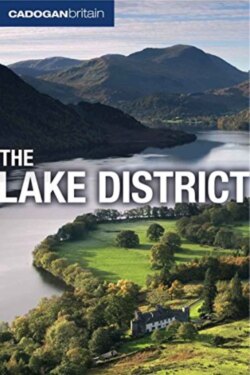Читать книгу Britain: The Lake District - Vivienne Crow - Страница 17
На сайте Литреса книга снята с продажи.
The First Farmers – From Neolithic Man to the Iron Age
ОглавлениеUp until Neolithic times, Mother Nature had been in charge of sculpting the landscape and clothing it as she saw fit, but the late Stone Age heralded a massive revolution as humans began to settle and farm. As well as growing crops, Neolithic man created clearings in the forest for his pigs and goats and cattle. These, in turn, chomped on the natural vegetation, restricting its growth and slowing the rate of natural regeneration, a process that has continued ever since. Solid evidence of Neolithic man in Cumbria is hard to find, but the most famous site is the Langdale axe factory (see here), where early quarrymen braved the steep, rugged slopes of Pike o’ Stickle for the volcanic rock used in high-quality axe heads that were subsequently traded throughout the country.
The arrival of the ‘Beaker’ people in the Eden Valley early in the second millennium BC heralded the start of the Bronze Age. These were the people who left us some of the most enigmatic of prehistoric remains – stone circles such as mysterious Castlerigg (see here) and, Cumbria’s largest, Long Meg and Her Daughters (see here). The henge at Mayburgh (see here) is thought to date from the early Bronze Age. But what were these stone monuments for? Were they religious sites, trading posts, calendars? We may never know for sure.
The climate was considerably warmer and calmer in the early to mid-Bronze Age, allowing man to move onto the fells. Many Bronze Age sites in Cumbria are located at about 150–300m (500–1,000ft) above sea level – cairnfields at places such as Barnscar near Devoke Water and Burnmoor above Eskdale are among the 60 or so sites that have been excavated. Today, they are lonely, moody spots that receive surprisingly few visitors.
The next group to arrive in Cumbria were the Celts, who crossed the Pennines from Yorkshire in about 300 BC. These Iron Age people were more sophisticated. They introduced advanced mixed farming techniques and their Brythonic language – a predecessor of modern Welsh. Many names for the county’s topographical features are Celtic in origin: ‘blain’ meaning summit gives rise to ‘blen’ as in Blencathra; and ‘creic’ becomes crag. The Cumbrian dialect sheep counting system, – yan, tan etc. – also comes from the Celtic language and bears striking similarities to Cornish and Breton.
At this time, the British Isles were divided amongst tribes, the Carvetti dominating most of Cumbria and the Setantii being confined to the far south of the county. They were eventually incorporated into the huge Brigantes tribe, which ruled most of northern England. There is some evidence of Iron Age settlements throughout the county, but more dramatic are the remains of the Celts’ early hill forts, including the largest, on top of Carrock Fell near Caldbeck.
The Modern County
Cumbria as we know it today was set up during the local government reorganization of 1974. Before that time, the area now covered by the modern county was made up of the historic counties of Cumberland and Westmorland as well as parts of Lancashire and Yorkshire. But that’s not to say that Cumbria is a 20th-century invention. The word ‘Cumbria’ has its origins in the Celtic words ‘Cymri’ or ‘Cumber’, meaning the ‘brothers’ or ‘countrymen’; and the borders of modern-day Cumbria roughly equate to those of the Celtic kingdom of Rheged (although the latter also incorporated parts of modern-day Yorkshire and Dumfries & Galloway).
